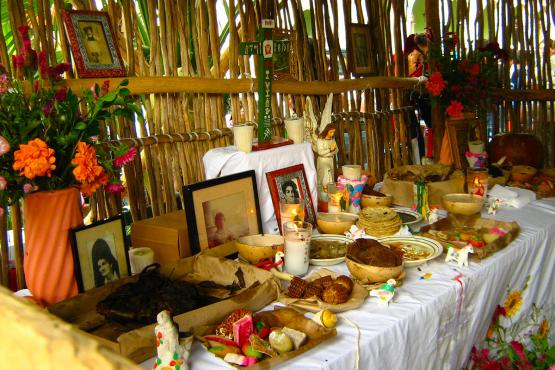They were terrified of death, but revered and honored their dead; bright colors, corn, and a dog for a quiet and safe way to what lies beyond.
The pre-Columbian Mayans were afraid, petrified really, of death. So much so that the representation of the deity (Ah Puch, Cumbau or Kizín) is a skeleton, with rotten flesh and bones as ornaments, and Xibalbá which is a dark and gloomy place in the deepest depths of the underworld.
However, they revered their dead. And they didn’t need a special day to do so because they usually buried them in the backyard of their homes (most of the common people or macaeuales) or cremated them and kept them in urns – which sometimes was the skull of the dead and would make a hole “in the colodrilo” (back of the skull) to deposit the arid remains – in a special place inside the house.

At least that is what the most knowledgeable researchers of the Mayan culture tell us because there is very little historical evidence – codices and writings are plagued with religious and geographical syncretism – so studies are based more on archaeological remains.
Two things, however, are of solid evidence: the funeral rites of the Maya had little (almost nothing) to do with the festivities of these days and – according to researcher María Luisa Álvarez de Agredos, of the University of Valencia – color occupied a predominant place both in the tombs and in the body arrangement of the deceased in the burials of political and religious dignitaries. He says that this is why it is possible that in todays rural cemeteries there is a burst of color in the tombs and what sorrounds them.

As for the ritual, in most cases it consisted of arranging the body, putting a few grains of corn in its mouth (so it would have food on its way to the afterlife) and a jade bead (for the fee). Buried along with the tools of his trade (if he was a farmer, his farming implements, if he was a craftsman, his tools) and sometimes a dog was sacrificed to guide him in his transit to the underworld and to guard him from the dangers of the road.
The great dignitaries were buried in monuments made ex profeso (like the Lord of Palenque and other tombs in different places) and they were adorned with jewels of gold, jade and other precious materials, richly elaborated ornaments, bird feathers and -it is said- sometimes slaves and some women were sacrificed to serve them in the next life.


